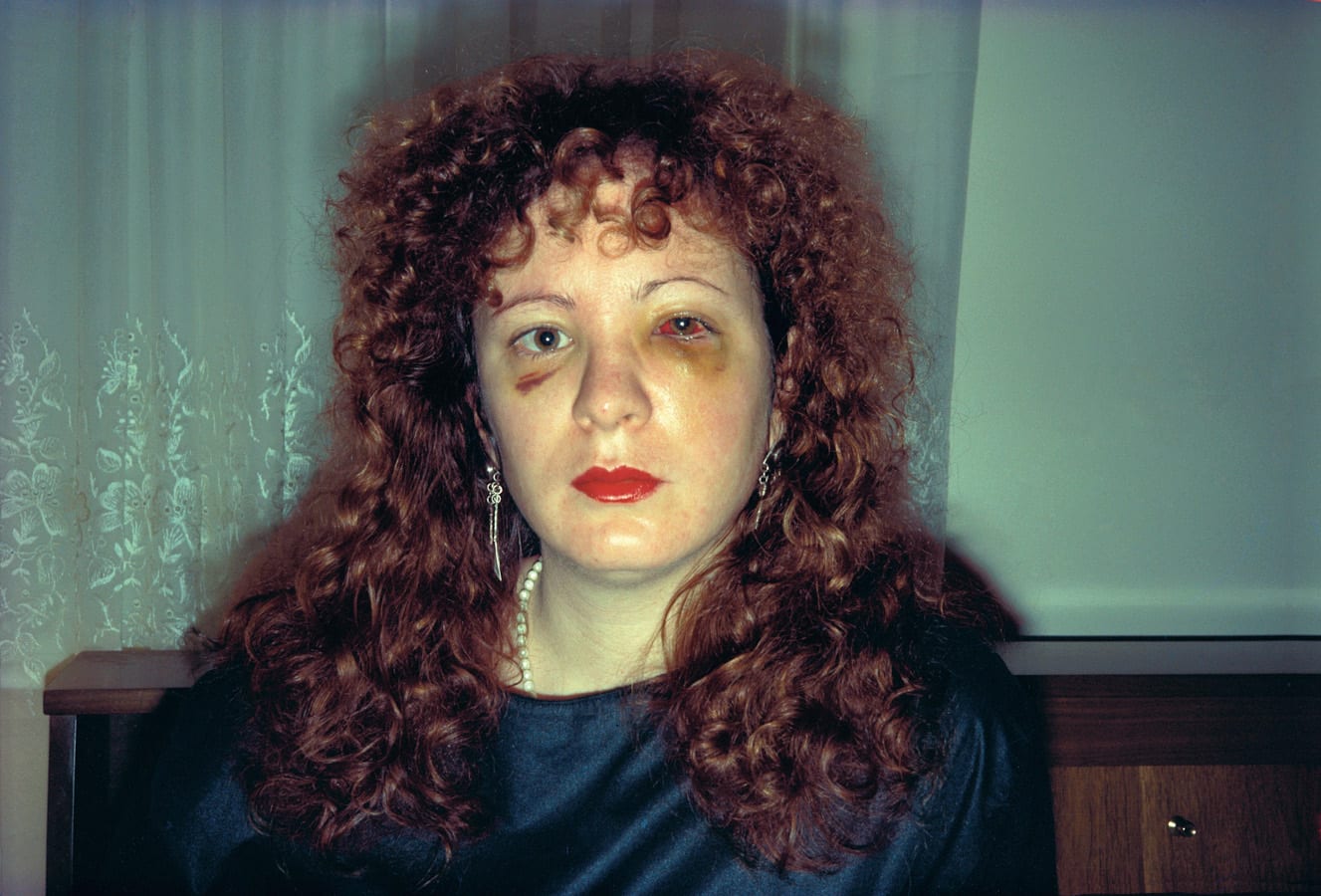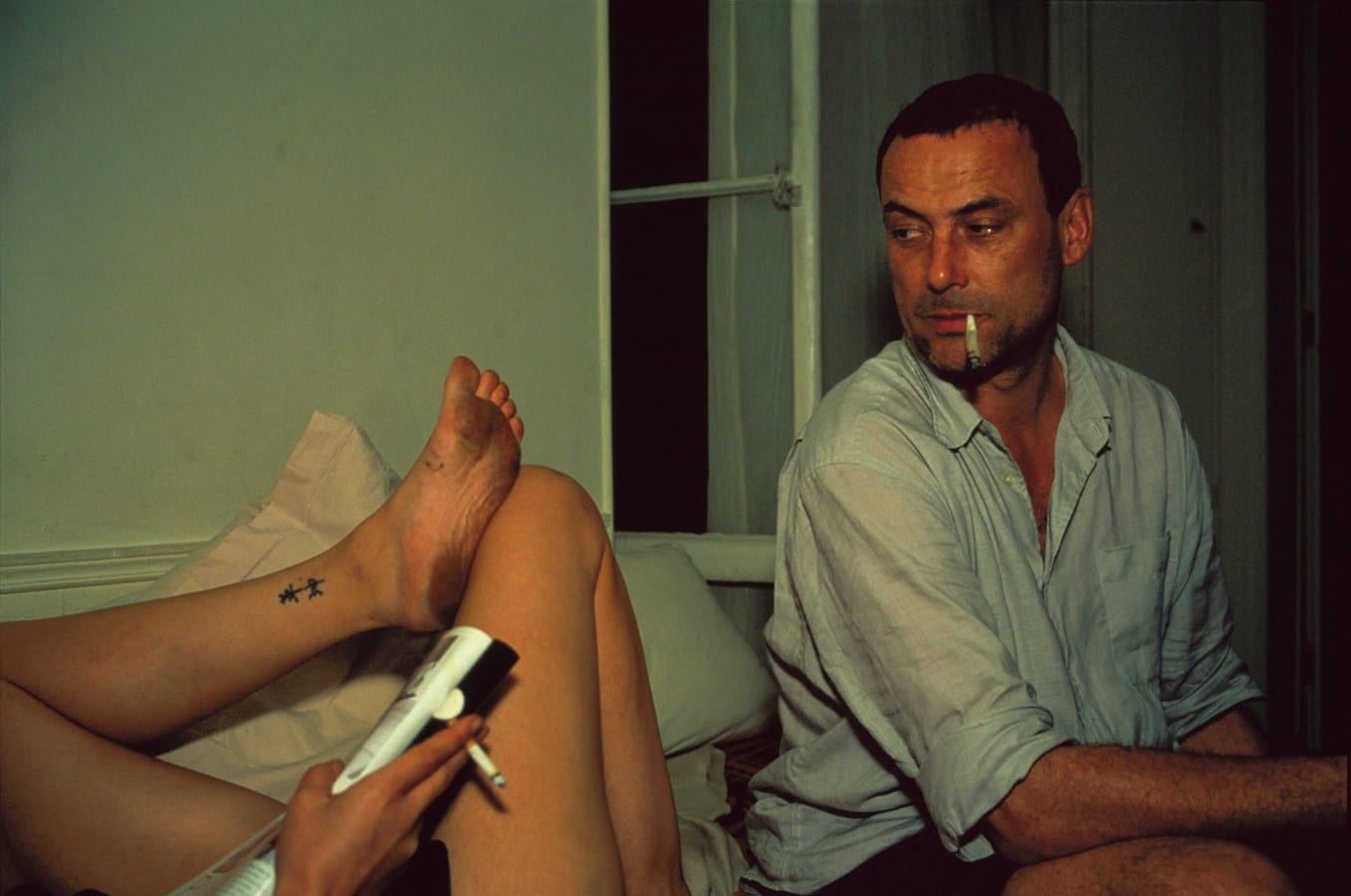“Instead of seeing Goldin’s re-edit as encompassing the visibility of any specific group, it invites reconsideration in an approach delinking the narrative of otherness towards what I see as a photographic project of genuine care.”
In her essay, Just Like a Woman, Abigail Solomon-Godeau asks “…in what terms can the Other become the One?”… (1)
These few words caught my attention because, lately, I’ve struggled to grasp what the photographic representation of certain groups of people really means. What has conflicted me is the investment in identity politics when a spotlight is placed on individuals perceived as different or as “Others”. I admit, the photographic series examining those on the receiving end of prejudice and inequality foregrounds what is relevant to the times, providing entrance into the spectrum of the art world’s set of concerns, with a visibility outside of negative media or stereotypical representations. It is a popular trope for photographers, not only for the concerned documentarist but also individuals self-representing, at pains with negotiating their own identity. It is also popular with institutions for whom it helps maintain the precarious balance of diversity policies. The problem I have is that in doing so, perhaps, in the taxonomical act there is the continuance of separation, and therefore further entrenchment into the position from which liberation is sought?
What has also been proved contentious (see here) is the act of “speaking” for the “Other” which is still surprisingly widespread and seems to come very naturally to photography through its default operational mode. It can’t help but instil a questionable position between the photographer and the subject. The camera or photographic apparatus is the privileging device in the differentiation between the One in control and the passive Other. Considering this in these times of an ever pressing need to go beyond the surface of “well-meaning”, when mere visibility isn’t enough and to create meaningful forms of creative exchange and comprehensive models of representation, photographic projects very often come up far too short in the establishment of genuine care and for providing a voice for the people they claim to speak on behalf of. Much more is required from the concerned photographer if he is not to persist as a colonizer of the subject and hence, image engaged in an act of inadvertent human separation.
I invoke these thoughts in considering the work of Nan Goldin. Although having sidestepped positional issues through her “insider” status photographing her friends, their (and her) difference or otherness has nevertheless very often provided the contextual frame of display and discourse – representational of certain groups on the “margins of society”. In last year’s second edition, re-release of The Beautiful Smile on Steidl, originally published on the occasion of Goldin’s 2007 Hasselblad Award, the retrospective cast back at Goldin’s body of work collapses this frame somewhat. Containing elements of Goldin’s seminal The Ballad of Sexual Dependency and subsequent works this book marks a survey of her photographs across nearly five decades. Instead of seeing Goldin’s re-edit as encompassing the visibility of any specific group, it invites reconsideration in an approach delinking the narrative of otherness towards what I see as a photographic project of genuine care. In opposition to thinking of the people depicted by Goldin as “them”, I want to suggest that Goldin’s approach invites the more universal, humanist reading that they are in fact, “us”.
“The book presents a survey of Goldin’s range and unsurprisingly includes the expected, iconic Goldin classics. It also releases the images from the series into an album format with the commonality of empathic relations in a cross-generational blend of selected intimacies.”

Jens and Clemens Embracing, Paris, 2001 @ Nan Goldin.
Goldin’s work, as presented in this book is a look back at the decades in which she photographed those close to her, with whom she had a personal relationship with. It celebrates her empathic gaze and her long-term project to diarise and commit to memory those moments and people of her life she valued highest. Ironically, it’s a story which has ultimately brought with it sadness too, as many of her friends have died, especially through AIDS. In many ways tragic, there is a thread of melancholy that runs through all Goldin’s work and this comes from the inevitability of loss that comes with love – a realisation that perhaps first came sharply into being after her sister’s suicide in childhood.
Through this book time extends Goldin’s project beyond that of the singular series. We see an overview of themes that span and overlap the decades and we find the universal nature of relations we have to one another. Through the sequence of images across different bodies of work, short groupings are made of people, places and subjects, there are certain visual tropes the artist has consistently returned to and to formal relationships that draw one or more images together in sets or spreads. The book presents a survey of Goldin’s range and unsurprisingly includes the expected, iconic Goldin classics. It also releases the images from the series into an album format with the commonality of empathic relations in a cross-generational blend of selected intimacies.
Most importantly, these photographs hold up a cognitive mirror to our own psyches and if so, Goldin’s visual diary contains echoes of moments that come very near to reflecting our own experiences and relationships. Our lives are remarkably similar in how we share joy and pain, desire and death, in equal measures and Goldin shows us our lives through hers, without any censorship – private made public. There is a candid honesty to Goldin’s work that arrives through her choice of subject matter and due to the proximity she has to her friends. The apparatus of photography ceases to be a physical or psychological barrier for Goldin and so instead of needing to satisfy any objective whims her work appears as if the camera wasn’t there, neutrally, without hierarchy.
If we choose to represent perhaps we ought to do that with some degree of compassion, equality and depth of enquiry? It is through the years of working with the medium and her “family” that lends Goldin’s work a sustained level of potency along with her commitment to caring – a commitment that has recently extended into activism. There is at no point where one feels that Goldin is detached from the content she records. She speaks from the same place that her friends speak from and not from any position of privilege nor offering down a hand in a temporary show of pity. In those photographic works that have stood as an example of collapsing this distance and equalizing the relationship between photographer and the photographed, Nan Goldin stands as exemplar, and so, I believe it is timely that a look back at her work over the decades might reset our thoughts on the pictures of others.
(1) – Solomon-Godeau, Abigail, Just Like a Woman in Photography at the Dock: Essays on Photographic History, Institutions & Practices, University of Minnesota Press, (1991).
Nan Goldin
(All Rights Reserved. Text @ Sunil Shah. Images @ Nan Goldin.)









